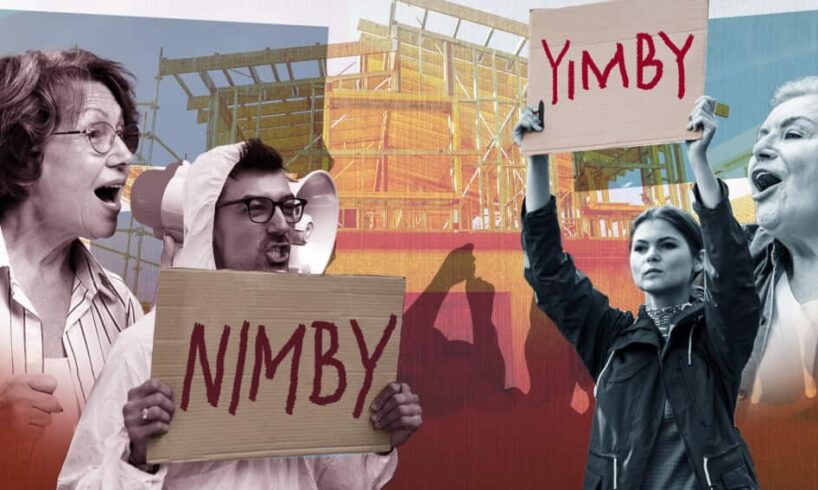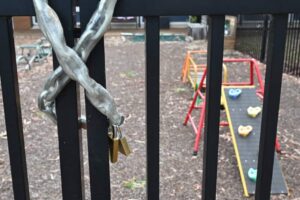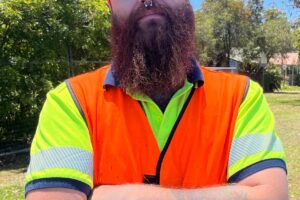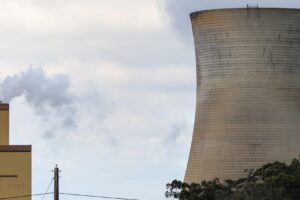
Emily Lockwood, a member of Sydney YIMBY — a group that advocates for higher-density housing under the ‘Yes In My Backyard’ banner — said the atmosphere at the Inner West Council chambers in Sydney on Tuesday evening was “tense”. Lockwood, who sat in the front row with her children by her side, told SBS News the energy in the room was “full-on” as the council voted on a controversial housing plan that would result in up to 30,000 new homes added to the inner-west area. The council covers 25 suburbs and about 186,000 residents. Before the vote, some irate residents rallied outside council chambers, confronting the councillors who they said were preparing to “sell out” their community.Hecklers yelled “bullshit” when Labor councillors spoke in favour of the plan.
“The councillor and council staff really couldn’t speak without being interrupted by the anti-housing crowd,” Lockwood said.
The council’s Fairer Future Plan, which includes new residential zoning between 6 and 11 storeys around transport hubs and main streets, scraped to victory by one vote, with Labor councillors using their majority against opposition from Greens, Liberal and independent councillors. For those who opposed the development — many of whom reject the label of anti-development NIMBYs (which stands for ‘Not In My Backyard’) — the outcome was a bitter disappointment. Alice (not her real name), a member of community organisation Save Marrickville, told SBS News she was unsurprised the plan passed but grateful to the councillors who voted against it.
Save Marrickville is part of the Better Future Coalition, a group of inner-west community groups that advocate for a ‘Better in my backyard’ — or BIMBY — approach, which calls for appropriate scale and density of developments, as well as meaningful community consultation.
While Alice said she believes housing is a human right and the housing affordability crisis is undeniable, she said the Fairer Future Plan will do little to alleviate those issues. “I do not believe handing over vast swathes of land to private property developers and investors is the way to solve the housing affordability crisis,” she said. “Private property developers don’t exist to create affordable housing — they exist to create profit for their shareholders.” However, for Lockwood and the Sydney YIMBYs, the plan passing represented a victory for housing affordability and keeping young people and renters from being forced out of the now-gentrified area.
Lockwood said around 60 members of the Sydney YIMBY community were at the vote.
“They left work early, they ran from uni, people tried to swap with their partners so that the other person could do bedtime with their kids. It really is amazing for so many people to come out and support housing.”
“So, we were really happy with how many people turned out and the excitement that there was, despite the opposition.”
Groundswell of community action
As state governments unroll plans they hope will combat the housing crisis, and Australian suburbs face profound changes in their appearance and population, there has been a groundswell of grassroots community action to influence how these changes do — or do not — take place. The NSW government has been accused of “toxic masculinity” for its plans to build a new train station and raise building heights at Woollahra in Sydney’s affluent east, while the Victorian government’s similar upzonings sparked protests in the bayside suburb of Brighton.
Many members of these organisations — and even their founders and leaders — have never taken part in any form of activism before.
Lockwood said Sydney’s YIMBY community had grown “massively” in recent years and she has seen the conversations around housing solutions become far more commonplace.”It’s really satisfying to see the way that conversation has changed and people who maybe haven’t been doing activism before recognising that this is something I can do and it’s something worthwhile,” she said. Jonathan O’Brien, the lead organiser of YIMBY Melbourne, told SBS News arguing for housing development can be attractive as a form of activism because it’s easily actionable, as well as being “tangible and winnable”. “It’s as simple as showing up to a council meeting where there’s a seven-storey apartment building going up and being able to show that when our members show up and they talk, these things eventually get approved by the council,” he said.
This type of activism, which is undertaken at local levels and can effect change quickly in communities, contrasts with other important movements like climate action, “which is much more difficult to affect locally”, O’Brien said.
“I think that’s been a really good way to get people to come in and get on board and then give up a little bit of their time for the sake of making a more sustainable, liveable and affordable city.”O’Brien said the most recent mobilisation of the YIMBY Melbourne community was around a Victorian government update to residential planning rules for townhouses, which streamlined development approvals for them across the city. “Our big flashpoint was getting dozens of people to submit in favour of the reforms, getting our policy documentation across and ultimately appearing at the inquiry — and eventually seeing the entire crossbench, including the Greens, support the reform” he said.
Margo Cashman, a market researcher and one of the committee members of Save Dully, which advocates for a “pragmatic and positive vision” for Dulwich Hill in Sydney’s inner-west, said their organisation consists of “lay people” and residents who have little previous experience in activism.
Cashman said community activism and interest in housing is growing and community groups help residents to understand the complexities of development plans.
“I think that’s what we’re feeling in the community — it’s a thirst for knowledge and to keep up-to-date and be a good citizen.”
The NIMBY and YIMBY divide
While the contrast of NIMBYs and YIMBYs is common in media, the identification of these groups can be more complex. YIMBYs — a relatively new movement — have coalesced under the name, but people who oppose development do not tend to identify themselves as NIMBYs, nor do they operate under groups that use that language.
Professor Awais Piracha, an urban planning academic from Western Sydney University, told SBS News the so-called NIMBYs tend to be people from affluent, leafy and “white” dominant suburbs and their motivations for campaigning are less transparent than YIMBY groups.
LISTEN TO
Rising rates of homelessness among First Nations families spurs calls for intervention
“When we say NIMBY, we are not talking about a registered group or a group that would go to a newspaper and say we are NIMBY group,” he said.”But it would be a euphemism or sort of indication of the broad community resistance to any additional dwellings or development in their area.”
Piracha said NIMBYs tend to be older groups of people who are better resourced and with time and money for activism, as compared to YIMBYs.
While community groups may define themselves more as BIMBYs, Piracha said he mostly rejects the term and the call for more consultation or alternative plans from councils is “just a way of kicking the ball in the tall grass” — a delaying tactic.
‘Divisive’ language
While NIMBY has become a widely-used shorthand for people who oppose development proposals for higher-density housing, many people reject the label and some even refer to it as a ‘slur’. Cashman said she believes the language “simplifies and flattens the argument” around housing and the term shouldn’t be employed by politicians or media. “I don’t think an issue as complex as housing is that simplistic,” she said.
“I also, on a personal level, never like calling people names and those terms are used in derogatory ways, which I don’t think helps.”
But O’Brien from YIMBY Melbourne said he believes the term is appropriate and the backlash against it is unnecessary. “What other term are you going to use? People say this — that NIMBY is a slur, well, okay do you want me to say ‘person experiencing status quo bias’? ‘Person who believes in housing hypothetically but is not willing to make any tradeoffs or any personal sacrifice for the sake of the rest of society’?”
O’Brien also said he believes the animosity and name-calling between both sides of the housing argument is more pronounced in Sydney than in Melbourne, likely due to the fact that more money is involved.
However, while battle lines between community groups are drawn on housing around the country, Alice said this uptick in community action has only been necessitated by a housing crisis caused by policy at higher levels of government. “It goes to a state and a federal level. A lot of this actually comes down to taxation. There are a whole lot of levers that councils are unable to pull and should be pulled at a federal level,” she said. “I do believe that it’s always been important for community members to stand up and participate in a democratic process.” — With additional reporting by the Australian Associated Press.
Source





